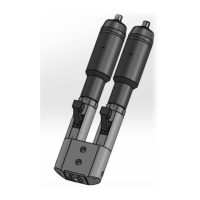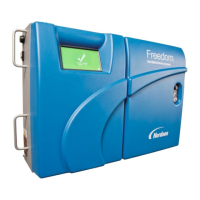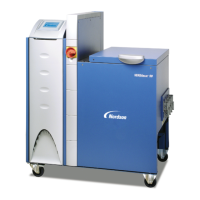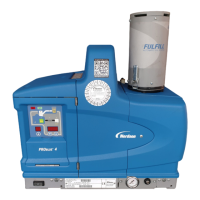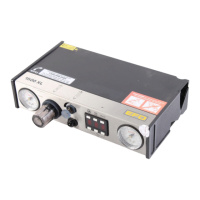Trainee Guide TR-L2-M2000
Level 2 Maintenance Training – M2000 Dispensing Systems 2-2-34 P/N 73-0018-00 (Revision B)
Information Sheet 2-6-1
Pump/Valves
A. Pump/Valve Types
1. Time/Pressure
Air pressure forces fluid through needle.
Amount dispensed is dependent on time, viscosity, temperature, pot life and
needle size and shape.
2. Auger
Air pressure feeds fluid to Auger.
Auger turns in closed cylinder and fluid is extruded through needle.
3. Piston
Material is pushed from syringe into pump chamber through stopcock.
Stopcock switches to dispense position and the piston is moved to dispense a
programmable amount of fluid.
4. Jet
These devices are referred to as “jets”, because they use an air-activated needle
to force a jet of fluid from the fluid chamber.
Employs a non-contact dispensing method in which individual drops of material
are formed and shot from the nozzle to the substrate.
B. Pump/Valve Configuration
1. Each pump and valve configuration is described in its model number. For this
example, we have a DP-3XYZ Pump.
X = Stopcock Y = Chamber Z = Motor
1 = Polycarbonate
3 = Nylon
2 = 1 cc
4 = 2 cc
0 = 19:1 With an Encoder
1 = 369:1
2 = 84:1
3 = 19:1 Without an Encoder
A DP-3120 is a pump with a Polycarbonate stopcock, 1cc chamber and a 19:1 ratio motor
with an encoder
.
2. The following example is for a DV-6XYZ Valve.
X = Material/Body Y = Cut/Depth Z = Pitch
1 = Delrin
2 = Hardened Tool Steel
3 = Carbide
4 = Stainless Steel Anti-
Separation
1 = Shallow (Not Available)
2 = Standard
3 = Deep
4 = (Not yet available)
1 = 8 (Standard)
2 = 16 (Fine)
3 = 32 (Not yet available)
A DV-6321 is a valve with a carbide body, standard depth and pitch of 8.
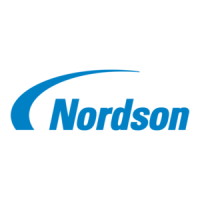
